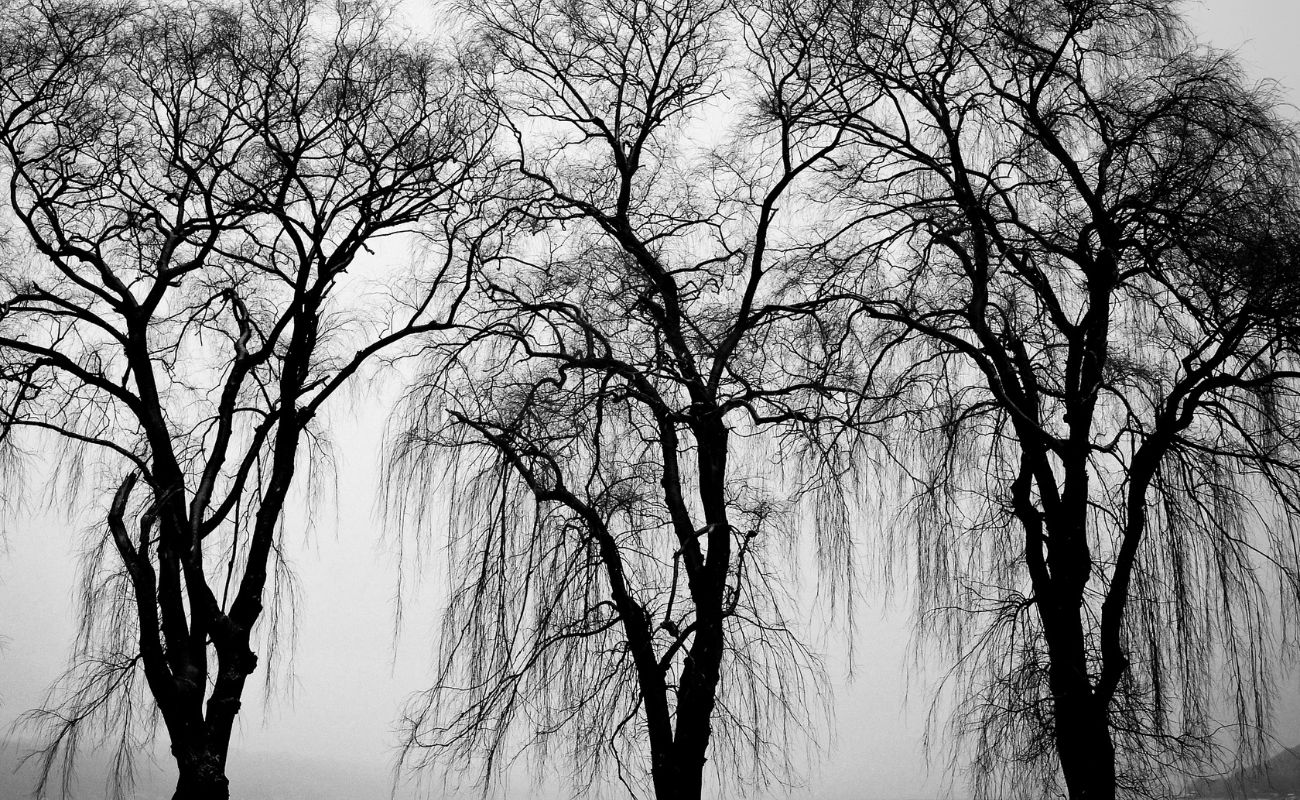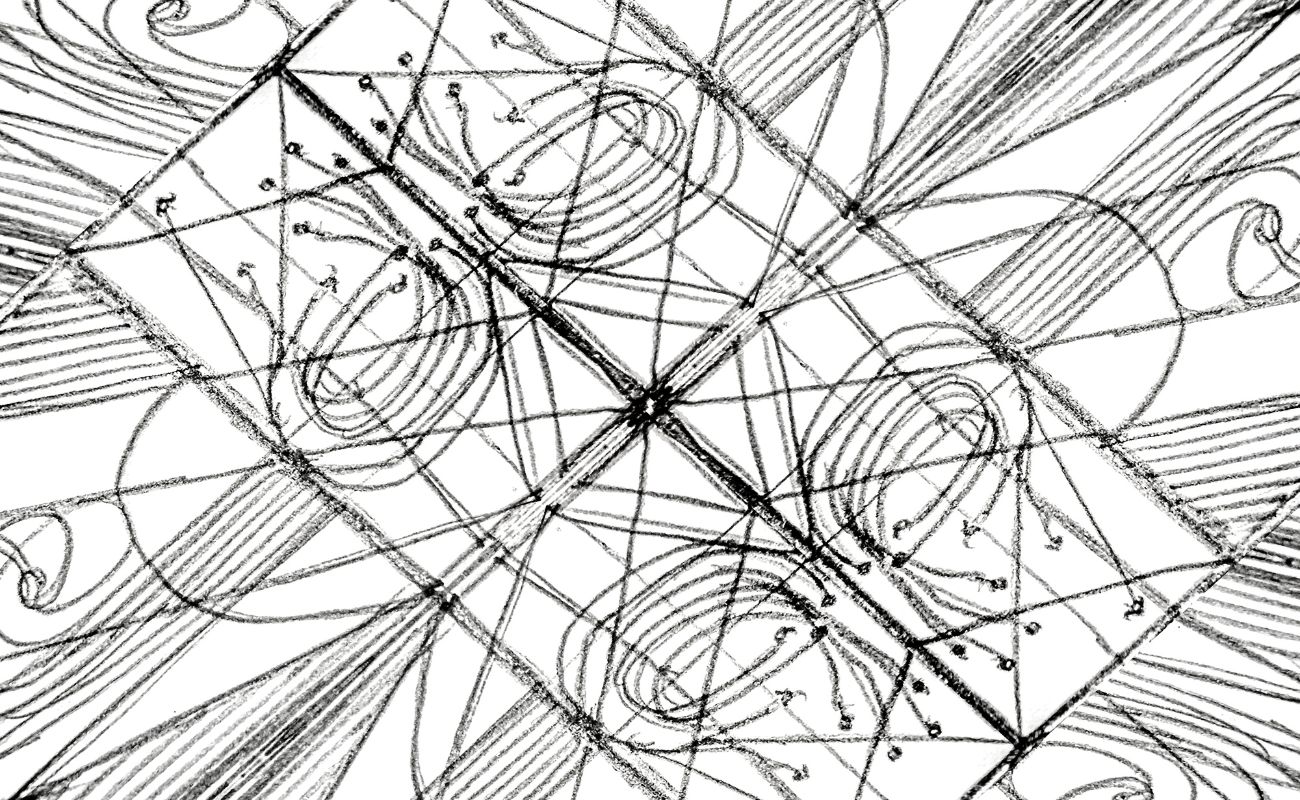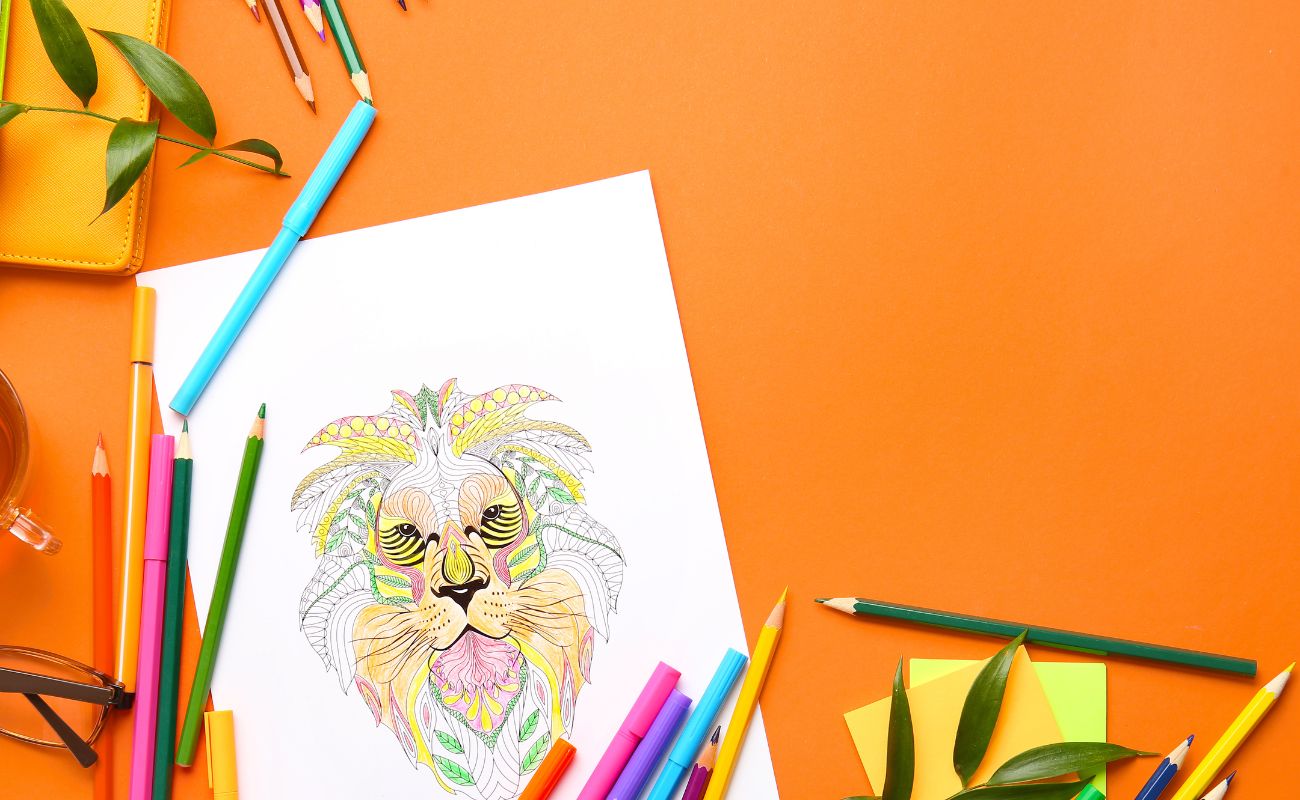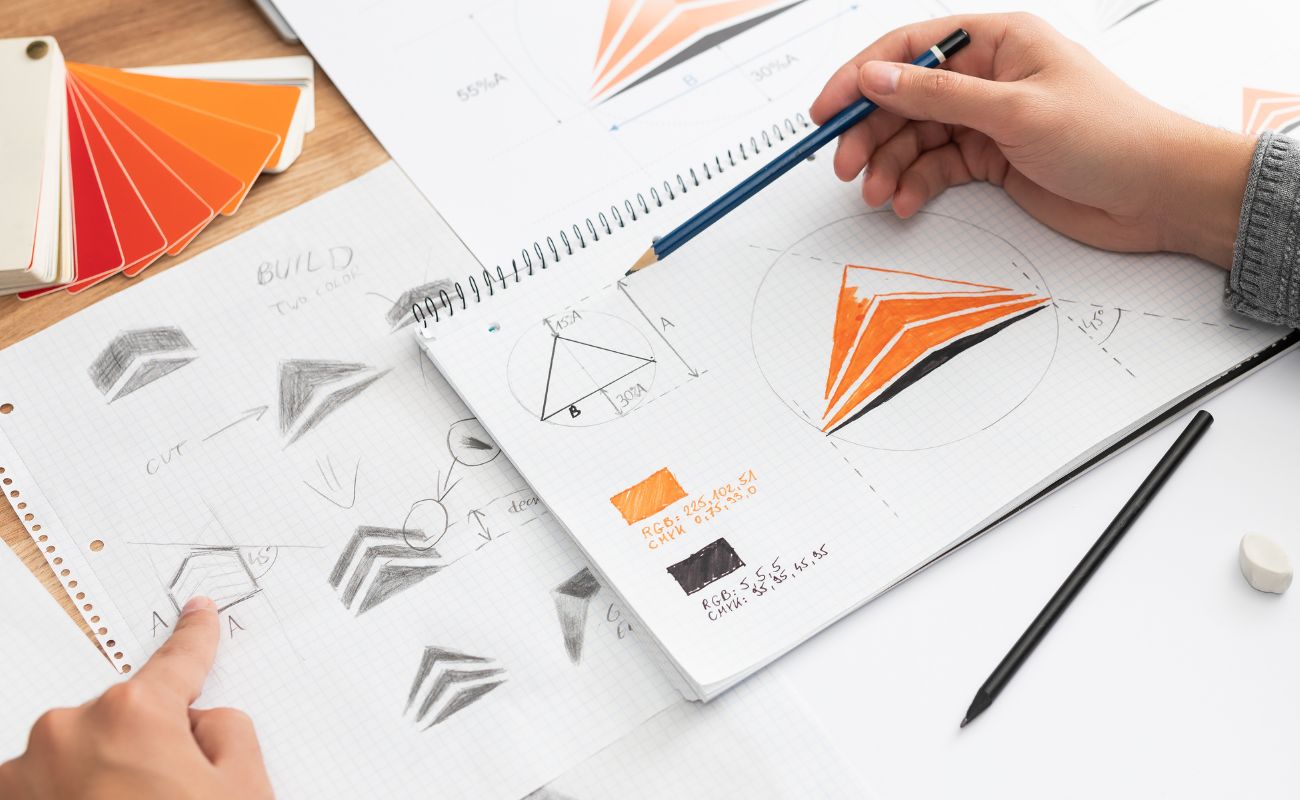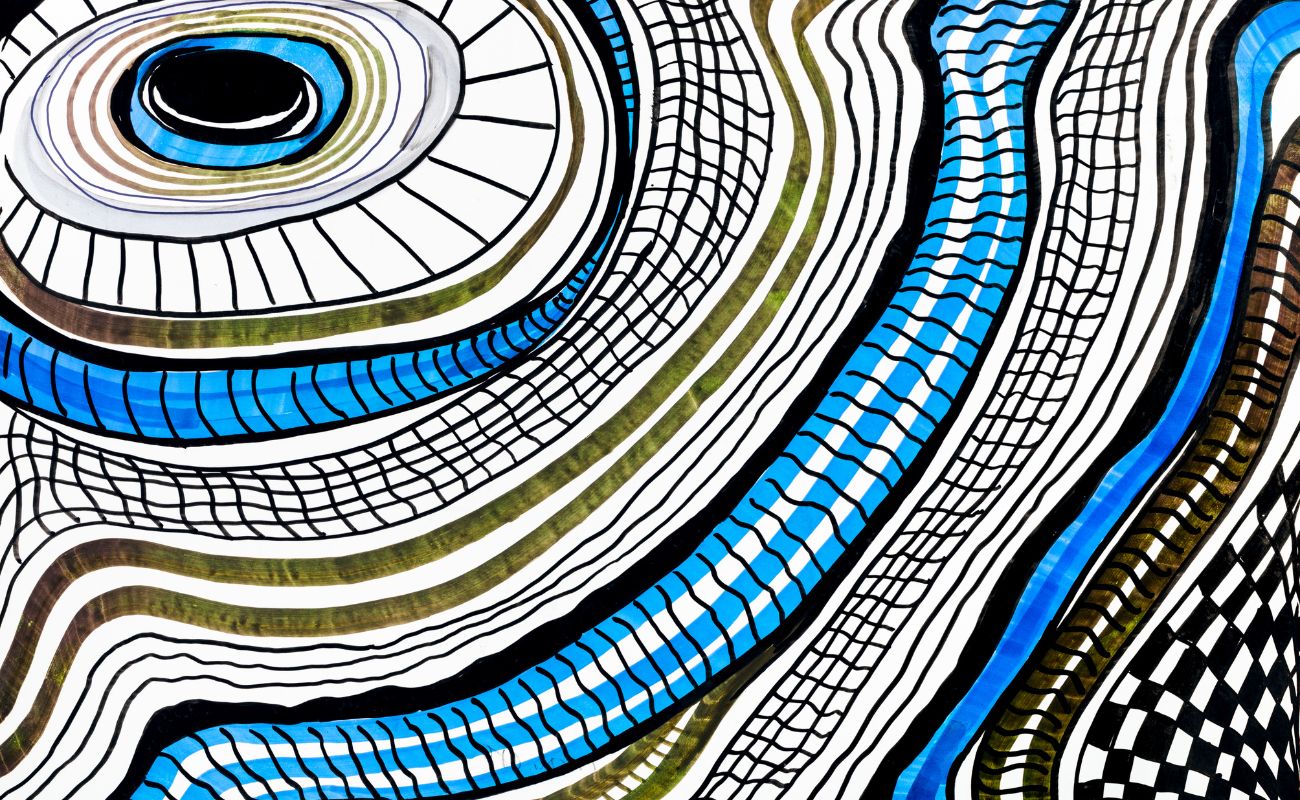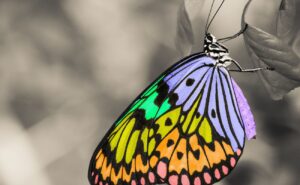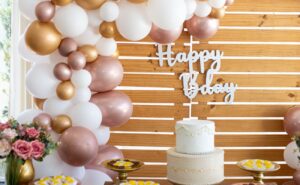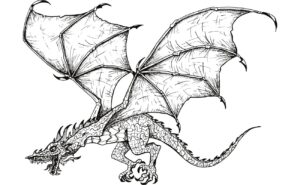Zentangle is an art form that combines simple, repetitive patterns to create intricate and beautiful designs. It is a wonderful way to encourage creativity and relaxation, especially for children and beginners. Here, we’ll explore the different aspects of the Zentangle Patterns – Unlock Creativity Of Kids And Beginner, providing step-by-step guidance and lots of ideas for getting started.

What are Zentangle Patterns?
Zentangle patterns are structured designs that are created by drawing repetitive lines, curves, and shapes. These Zentangle patterns are usually easy and can be combined with different and appealing techniques of art. Zentangle patterns are not only a creative activity but also a meditation practice that can help reduce stress and improve focus.
Easy Zentangle Patterns
For beginners, simple Zentangle patterns are the best way to start.These techniques usually include simple patterns and repetitive strokes, making them ideal for beginners.
Zentangle Patterns- Benefits of Zentangling for Beginners
Zentangling gives many benefits especially to children and beginners. It improves concentration, boosts fine motor skills, and gives a sense of accomplishment.Moreover, it is the best way for kids and adults to express their creativity.
Different schools and Daycare centers also have zentangle patterns classes in their study course. You can see the curriculum of the school if you want to teach your kid Zentangle patterns.
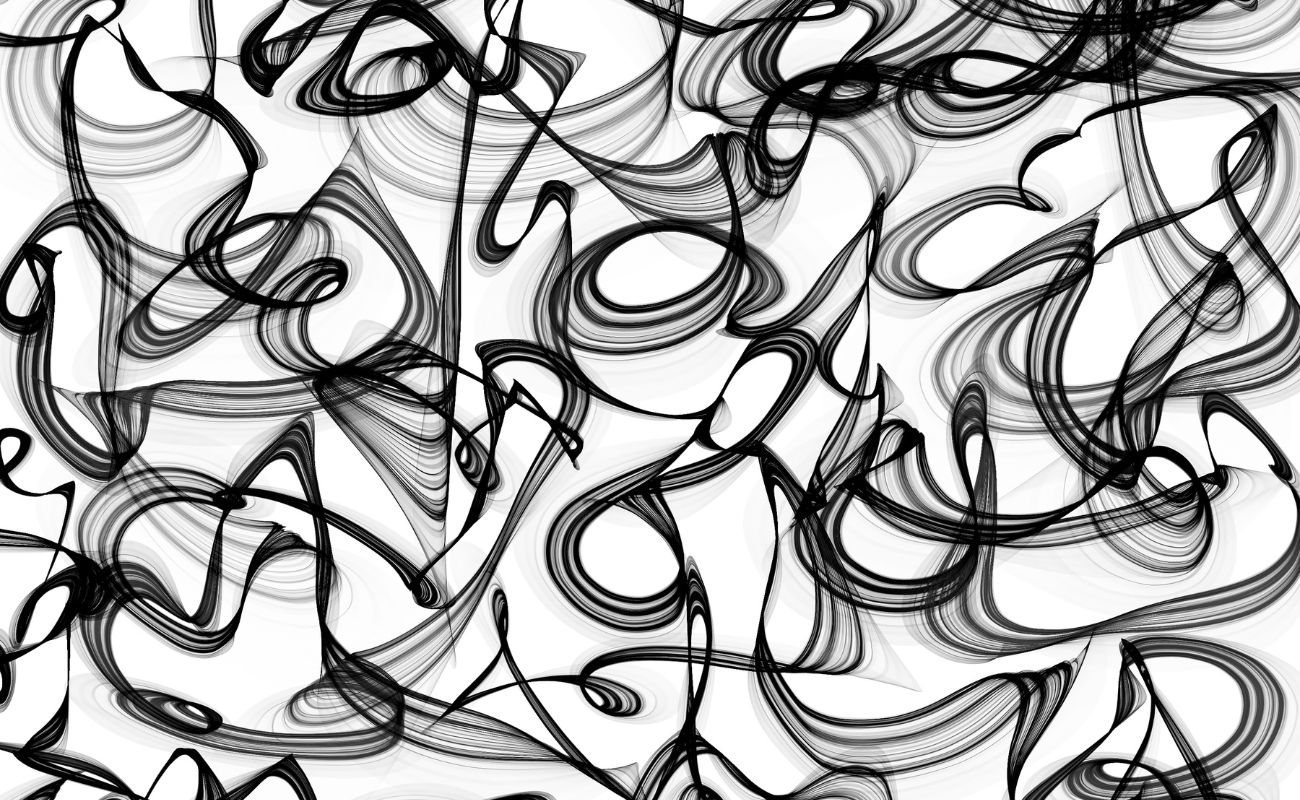
Zentangle Patterns for Beginners
Zentangle patterns for beginners are designed to be accessible and easy to follow. These designs usually include basic shapes and lines that anyone can draw, regardless of artistic experience.
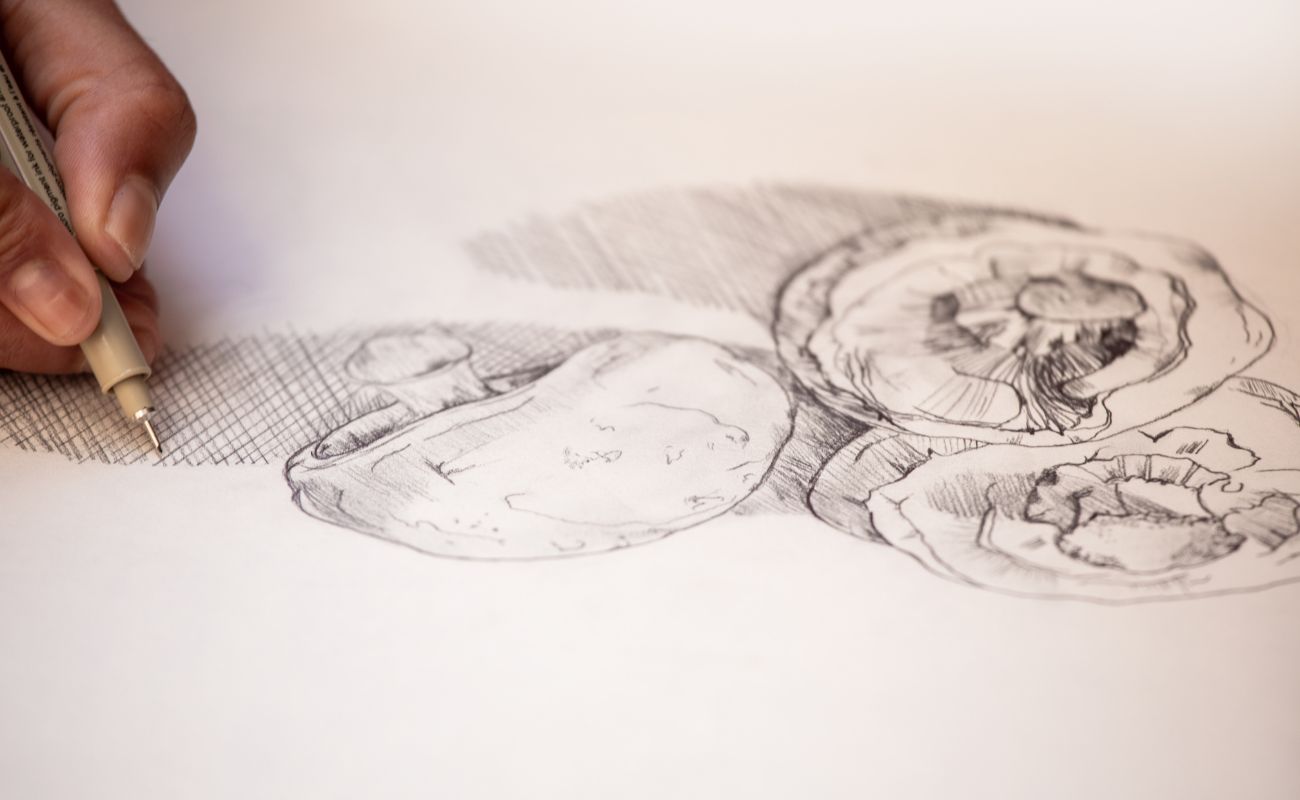
Materials Needed For Zentangle Patterns Art
Creating zentangle patterns is a fun activity by using simple materials. It does not matter whether you are a beginner or an experienced person, having the right tools can enhance your zentangle experience.Here’s a comprehensive list of materials needed to get started with Zentangle patterns art.
- Paper
- Tiles : Zentangle art is often created on small , square pieces of papers called tiles. The size of these tiles are 3.5 inches by 3.5 inches.
- Sketchbooks: A sketchbook with smooth white paper is a good option for those who prefer more portable options.
- Specialty Paper: For a more best look , you can use high quality art paper.
- Pens
- Micron Pens: These are the most favorite Zentangle pens for their fine tips and good quality of ink. Size 01,03 and 05 are commonly used.
- Gel Pens: To add color or metallic tones, gel pens are a great option.
- Fineliners: Other fine liners can be used with water-resistant, permanent ink.
- Pencils
- Graphite Pencils: It is used for initial sketching and adding shading to your zentangle design .
- Mechanical Pencils: These are great for detailed work and precise lines.
- Erasers
- Kneaded Eraser: It is used for gently lifting graphite without damaging the paper.
- Vinyl Eraser:It can erase everything, even certain inks.
- Blending Tools
- Tortillons:These are paper stumps used for blending pencil shading.
- Blending Stumps: It is similar to tortillas. Blending stumps help to smooth our graphite for a more polished look.
- Coloring Tools
- Colored Pencils: Adding color to your Zentangle pattern can give life to them. Prismacolor and Faber-Castell are popular brands.
- Watercolor Pencils: These watercolor pencils can be used dry or with water for a watercolor effect.
- Markers: Alcohol-based markers like Copic or Spectrum Noir can add vibrant color.
7. Ruler and Compass
- Ruler: It is useful for drawing straight lines and borders.
- Compass: It is used to draw perfect circles and other geometric shapes.
8.Templates and Stencils
- Shape Stencils: It is used to draw consistent shapes and patterns.
- Pattern Templates: These can provide inspiration and guidance, especially for beginners.
- Storage Solutions
- Pencil Case: To keep all your pens, pencils, and other small tools organized.
- Portfolio: For storing and showcasing your finished Zentangle tiles and drawings.
Creating Your First Zentangle Design: Step-by-Step Guide For Beginners and Kids
Zentangle is an art form that involves creating complex, repeating patterns in specific spaces.Creating your first Zentangle can be a fun and rewarding experience, whether you’re a beginner or a kid looking to explore your creative side. In this step-by-step guide, we’ll show you how to create your first Zentangle.

Step 1: Gather Your Materials
To start creating your first Zentangle, you’ll need a few simple things. You will need a piece of paper, a pencil, a good pen, and an eraser. You can also use markers or colored pencils if you want to add color to your design.
Step 2: Create a Border
Start by drawing a border on your paper to define the space for your Zentangle pattern. You can make the border any shape or size you want, such as a square, rectangle, circle, or any other geometric shape.This will help give your design a neat and organized look.
Step 3: Draw Your String
Next, draw the “string” in the border of your paper. A string is a curvy or angular line that divides the space within the border into smaller sections. This will help you decide where to draw your patterns in the design.
Step 4: Choose Your Patterns
Now it’s time to choose the pattern you want to add to your Zentangle design. There are hundreds of different patterns to choose from, from simple lines and dots to complex shapes and textures. You can find inspiration for patterns online or in Zentangle pattern books.
Step 5: Start Drawing
Once you’ve chosen your design, start drawing them in your section of the string.Take your time and focus on each pattern, repeating it consistently throughout the design.You can change the size, the weight of the line and space of each process to create visual interest.
Step 6: Add Details
As you continue to fill in your Zentangle design with patterns, you can add details and shadows to make it more three-dimensional. Use your pen to shade certain areas of the drawing or highlight with a white gel pen for added contrast.
Step 7: Finish Your Design
Once you’ve completed the process and details of your Zentangle, sit back and enjoy your work.You can add your signature or date the design in a corner if you like. You now have a beautiful and unique piece of art that you can be proud of.
Exploring Techniques To Enhance Your Patterns
Zentangle offers a variety of techniques to add interest and depth to your designs. Here are some popular methods:
1- Shading: Adding shading to your Zentangle patterns can create depth and dimension. Use a pencil or shading tool to add shades and highlights to different areas of your pattern. This can make your patterns appear more three-dimensional and visually interesting.

2- Stippling: Stippling is a technique often used in Zentangle techniques. This involves creating a pattern or shading effect using a series of small dots or dotted lines. These dots are placed close together or farther apart to create different levels of shading or texture.In Zentangle, stippling can be used in different ways to enhance your designs.
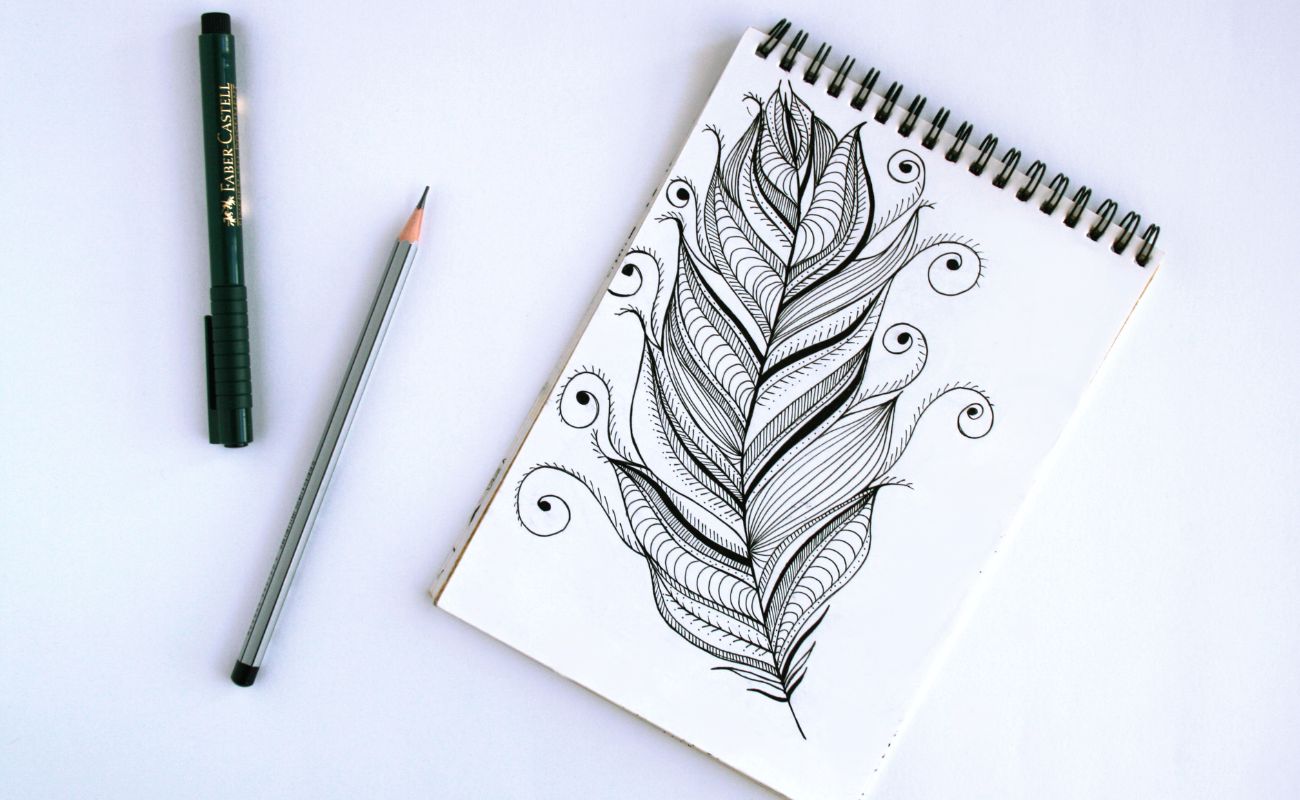
3- Hatching: Hatching is a technique often used in Zentangle patterns to create shadows and textures. This involves drawing parallel lines or strokes in a consistent manner and spacing to create value and depth in your artwork.
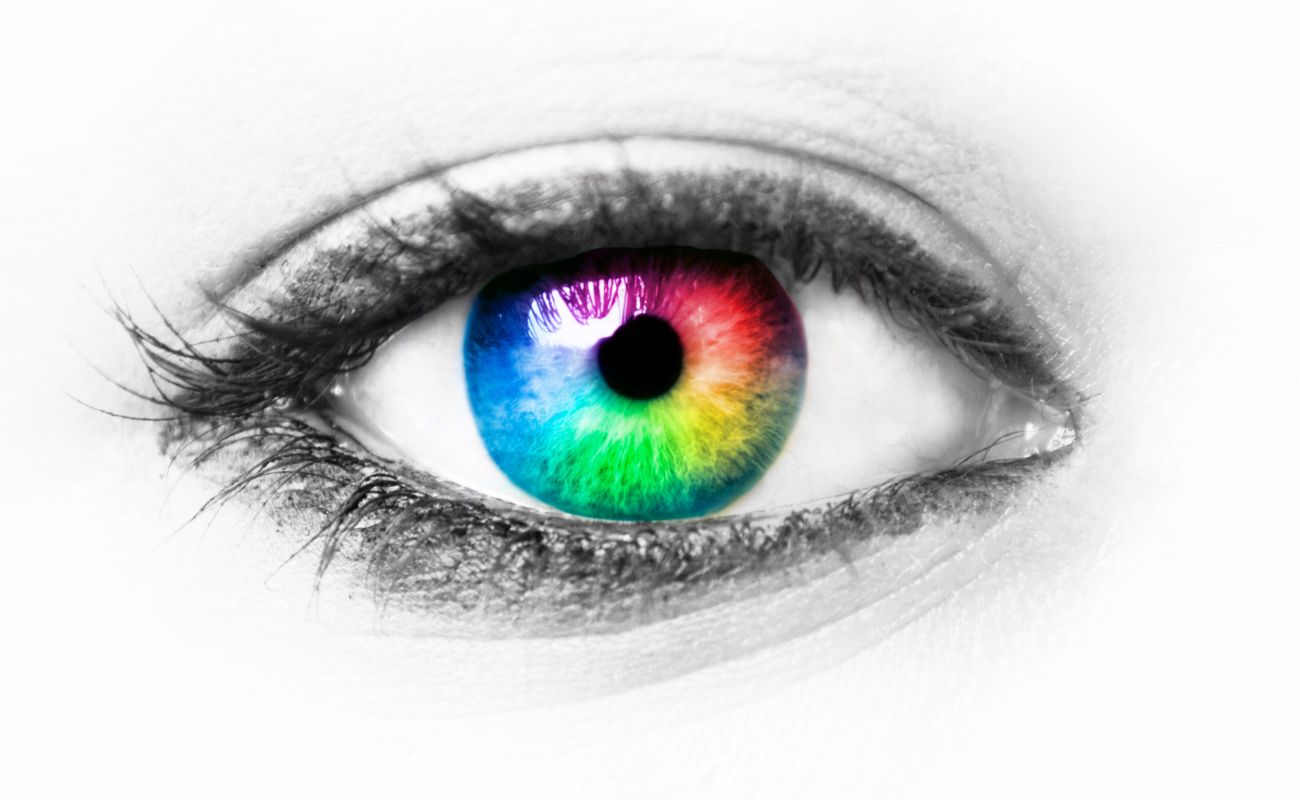
Zentangle Patterns – Personalizing and Adding Unique Touches
Zentangle art is a meditative and creative practice that allows for endless arrangements and unique touches. While basic patterns are a good place to start, adding your own personal touches can make your Zentangle pattern unique. Here’s how to customize your Zentangle pattern and add a special touch.
Embrace Your Style
Discover Your Signature Patterns
- Experiment with Variations:Try different versions of the basic pattern to find what works for you.
- Create Custom Patterns: Create your own templates that reflect your style and preferences.
Example:If you like floral designs, add more flowers and plants to your design.
Consistency and Repetition
- Repeat Signature Elements:Always use some shape or pattern in your design to create a recognizable style.
- Personal Symbols: Incorporate personal symbols or shapes that have special meaning to you.
Add Color
Incorporate Colored Pens and Pencils
- Colored Pens:Use colored pens to outline or fill in patterns, adding energy to your designs.
- Colored Pencils: Shade patterns with colored pencils for a softer, blended look.
Techniques:
- Gradient Shading: Create a gradient effect by gradually changing colors.
- Contrasting colors: Use contrasting colors to highlight certain patterns.
Use Different Mediums
Explore Various Tools and Materials
- Watercolor: Add watercolor to your Zentangle design for a beautiful background.
- Markers: Use an alcohol-based marker for bright colors.
- Gel Pens: Incorporate metallic or glitter gel pens for added sparkle.
Mixed Media:
- Combine ink with watercolor or acrylic paints for a mixed media Zentangle design.
Incorporate Themes and Inspirations
Draw Inspiration from Your Surroundings
- Nature: Use patterns inspired by natural elements like leaves, flowers, and waves.
- Architecture: Add geometric patterns and shapes inspired by buildings and structures.
- Traditional Art: Draw from traditional patterns and motifs from different cultures.
Themed Zentangles:
- Create Zentangle designs based on a theme, such as seasons, holidays, or specific color palettes.
Add Texture and Dimension
Use Shading Techniques
- Pencil Shading: Add depth to your designs using pencil shading.
- Cross-Hatching: Use cross-hatching to create texture and dimension.
3D Effects:
- Experiments with techniques that give the illusion of three dimensions,such as overlapping patterns or shading.
Incorporate Personal Elements
Include Words and Letters
- Monograms: Add initials or monograms to your Zentangle designs.
- Quotes: Add small, meaningful quotes or words within your patterns.
Personal Symbols:
- Include symbols that represent personal interests or important life events.
Try Different Formats
Vary the Canvas Size
- Large Scale: Create larger Zentangle pieces to explore more intricate details.
- Miniature: Make tiny Zentangle designs for a fun and challenging twist.
Formats
- Experiment with different styles and formats, such as circular designs (Zendalas) or border patterns.
Showcase Your Work
Create Zentangle Projects
- Decorative Items: Apply Zentangle patterns to everyday items like mugs, phone cases, or bookmarks.
- Gifts: Make personalized Zentangle artwork as gifts for friends and family.
Display Ideas:
- Frame your Zentangle designs or compile them into a sketchbook to showcase your progress and creativity.
Varieties of Zentangle Patterns
The Zentangle patterns, also known as “tangles,” replicates the techniques used to create intricate and beautiful works of art. Here are 20 different Zentangle patterns to inspire your creativity.
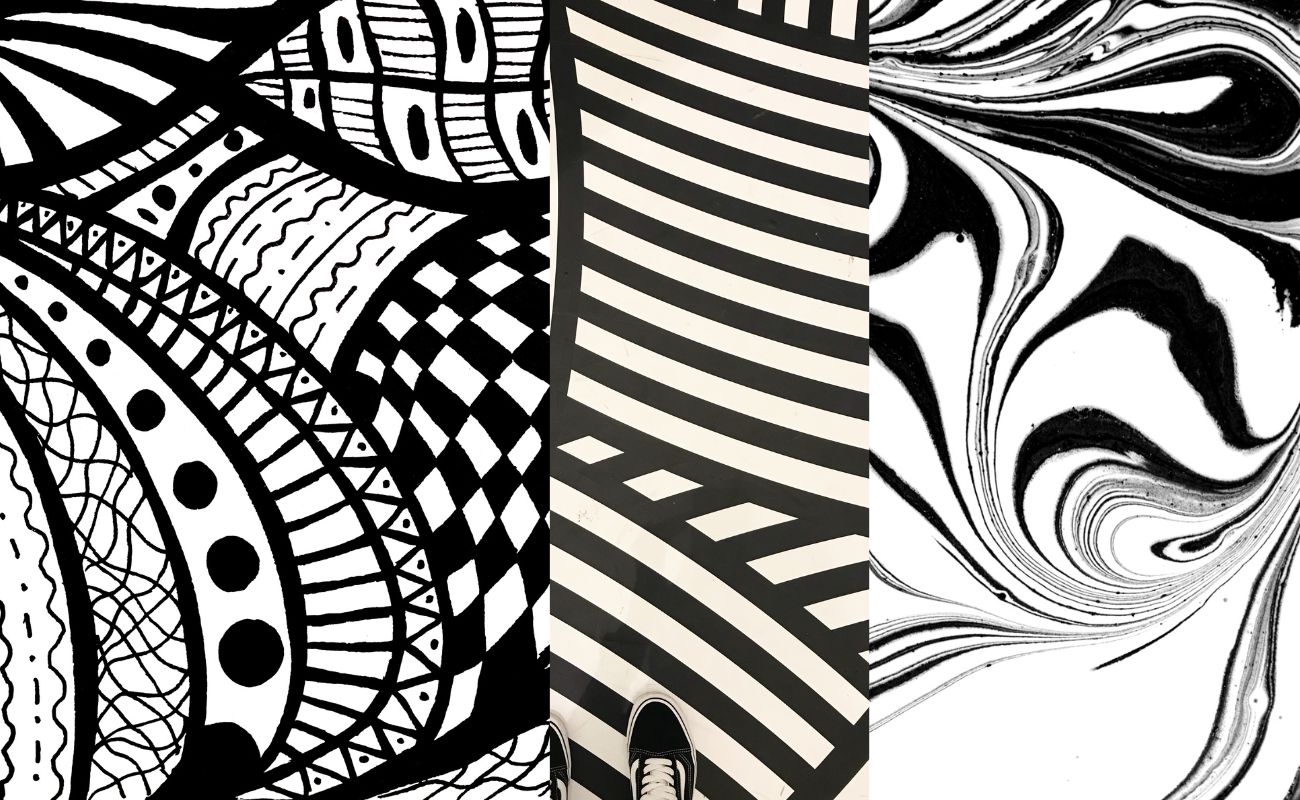
Hollibaugh
A beautiful Zentangle pattern, Hollibaugh has vertical lines that overlap, creating a weaving effect.

Flux
This pattern reflects the nature of organic tears that are connected and repeated to create a flowing design.
Printemps
Printemps is a simple and beautiful pattern with spirals or concentric circles filling the space with a swirling effect.
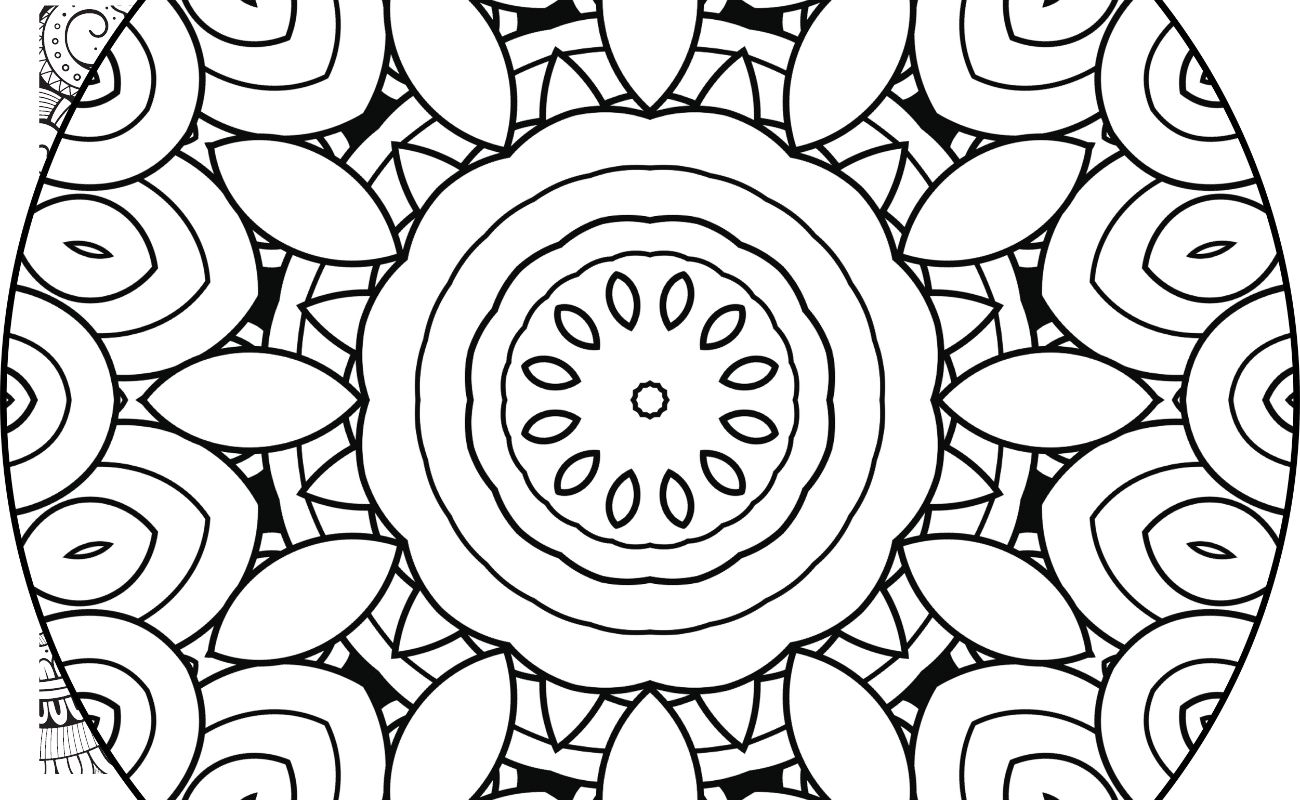
Bales
The pattern is based on a grid where each square is filled with an asterisk-like pattern, creating a floral or trellis effect.
Shattuck
Shattuck involves curved lines that intersect to form a shell-like appearance, often shaded to add depth.
Cadent
This pattern is created by connecting points and curved lines, making a series of loops that connect together.
Mooka
Mooka features flowing, organic shapes that resemble elongated teardrops or paisleys, often with added flourishes.
Zinger
Zinger is a whimsical pattern with spiraling lines and tiny leaf-like shapes, creating a playful, plant-like design.
Knightsbridge
A simple yet striking pattern with a checkerboard grid filled with alternating black and white squares.
Fescue
Fescue is characterized by smooth lines of grass that curl and move to a point, often with small dots.
Betweed
Betweed involves drawing lines that radiate from a central point and are filled with parallel lines to create a woven look.
Crescent Moon
The pattern begins with a variety of curved shapes (such as a Crescent ), which are then filled with lines or dots to create a textural appearance.
Diva Dance
Diva Dance mimics the look of waves or rolling hills by drawing lines that curve and overlap in a rhythmic pattern.
Paradox
A geometric pattern created by drawing a series of straight lines into a triangular or square space, creates an illusion.
Tipple
Tipple is a fun and easy pattern made up of small circles or bubbles that fill a space with a random, organic feel.
Auraknot
Auraknot has a star shape with overlapping glowing lines, creating a complex and smooth effect.
Jetties
Jetties are clusters of small circles that form a bubbly, three-dimensional appearance, often shaded for added depth.
Nzeppel
This pattern involves drawing a grid of irregular shapes that are then filled with curved lines, creating a net-like structure.
Rixty
Rixty has spirals and loops that come together and connect, forming a large, textured pattern.
Yincut
Yincut is made up of diagonal lines that intersect to form a grid-like pattern, often shaded to add a sense of depth.
10 Creative Ideas and Prompts for Zentangle Patterns
Creating Zentangle patterns is a fun and relaxing way to explore your creativity. Here are 10 simple ideas and suggestions to get you started:
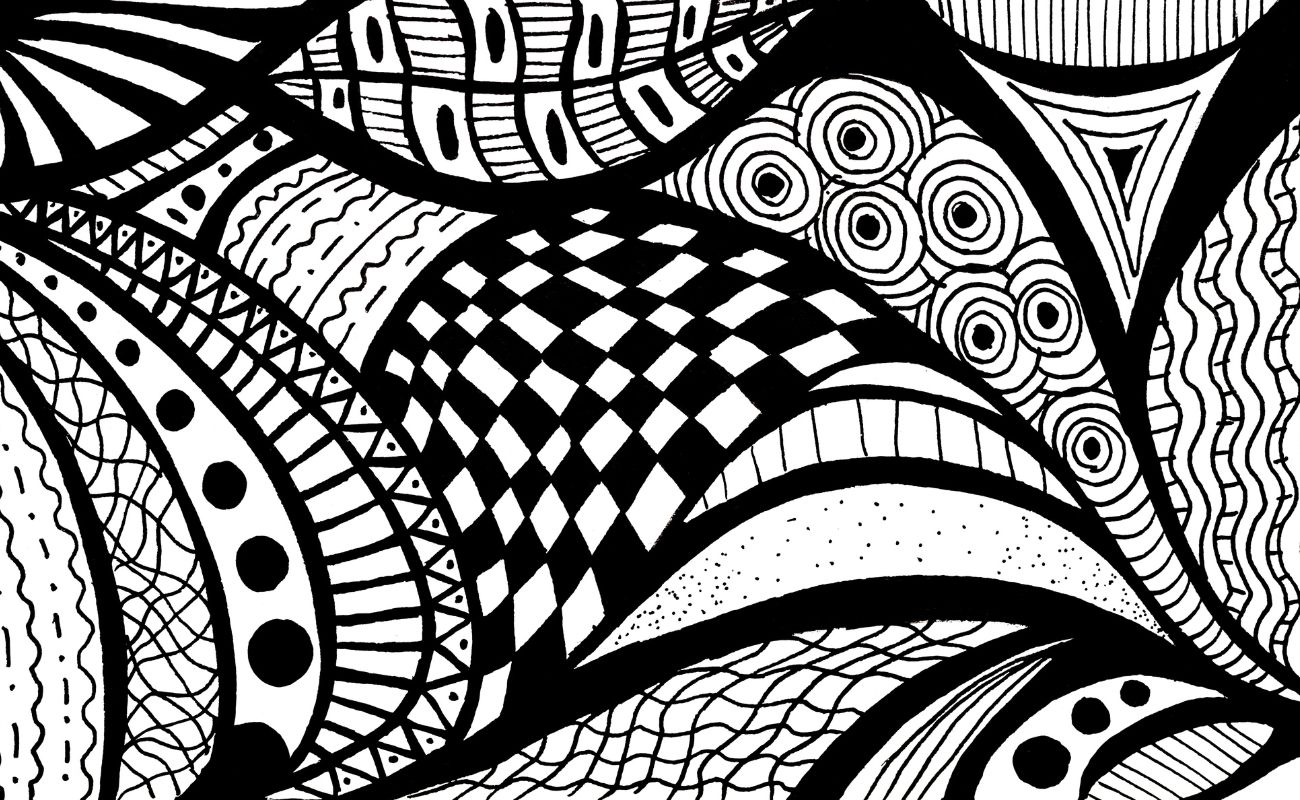
Nature-Inspired Zentangles
- Prompt: Draw designs inspired by flowers, leaves, and vines.
- Examples of patterns: Flux (leaf type), Fescu (line of grass).
Geometric Wonders
- Prompt: Use triangles, squares, and circles in your designs.
- Example Patterns: Paradox (triangles), Knightsbridge (checkerboard).
Underwater World
- Prompt: Create patterns like waves, fish scales, and seaweed.
- Example Patterns: Diva Dance (waves), Tipple (bubbles).
Celestial Dreams
- Prompt: Draw stars, moons, and constellations.
- Example Patterns: Auraknot (star shapes), Crescent Moon (curved shapes).
Whimsical Creatures
- Prompt: Design patterns inspired by mythical creatures.
- Example Patterns: Mooka (paisley shapes), Zinger (spirals).
Architectural Marvels
- Prompt: Use patterns that mimic bricks, tiles, and windows.
- Example Patterns: Betweed (woven lines), Nzeppel (net shapes).
Botanical Bliss
- Prompt: Draw patterns inspired by flowers, trees, and leaves.
- Example Patterns: Flux (leaf shapes), Shattuck (shell-like curves).
Zen Mandalas
- Prompt:Create a circle diagram with repeating patterns.
- Example Patterns: Printemps (spirals), Rixty (loops).
Seasonal Scenes
- Prompt: Design patterns that represent the four seasons.
- Example Patterns: Yincut (snow-like lines), Hollibaugh (overlapping lines)
Abstract Expressions
- Prompt:Make abstract patterns using random shapes and lines.
- Example Patterns: Zentangle Original (unique patterns), Simple Doodles (random doodles).
10 Zentangle Patterns For Kids
Here are 10 fun and easy Zentangle patterns for kids, each with a playful name and simple instructions.
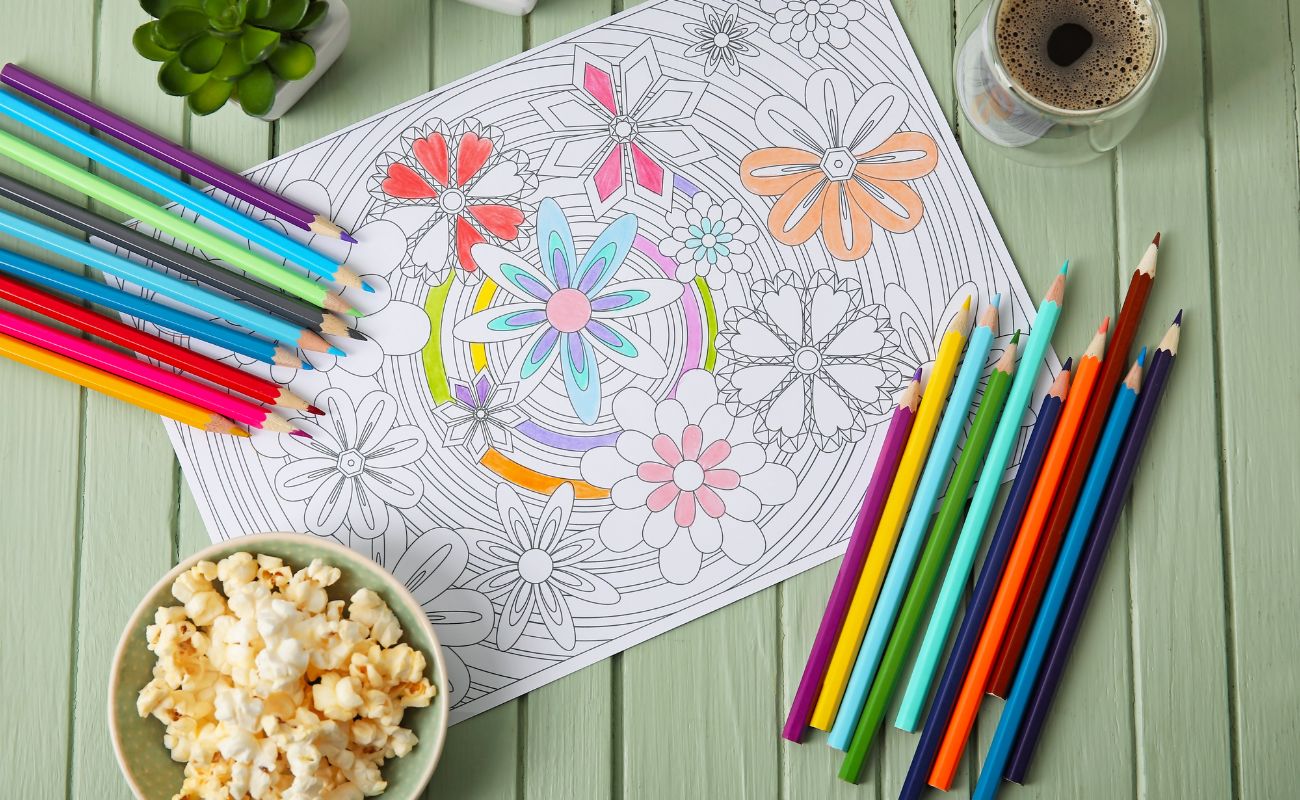
1. Dotty Delight
- What it Looks Like: Lots of dots.
- How to Draw: Fill a space with random dots of different sizes.
2. Wavy Waves
- What it Looks Like: Gentle waves.
- How to Draw: Draw wavy lines that go up and down across the page.
3. Zigzag Zest
- What it Looks Like: Zigzag lines.
- How to Draw: Draw zigzag lines back and forth across the space.
4. Leafy Fun
- What it Looks Like: Leaves on a vine.
- How to Draw: Draw a wavy line and add small leaf shapes on either side.
5. Starry Sky
- What it Looks Like: Tiny stars.
- How to Draw: Fill the space with small star shapes.
6. Bubble Bliss
- What it Looks Like: Lots of bubbles.
- How to Draw: Draw different-sized circles overlapping each other.
7. Stripey Stripes
- What it Looks Like: Stripes.
- How to Draw: Draw straight lines parallel to each other across the space.
8. Checker Fun
- What it Looks Like: Checkerboard.
- How to Draw: Draw a grid of squares and fill in alternating squares.
9. Swirly Swirls
- What it Looks Like: Swirling lines.
- How to Draw: Draw spiral shapes that swirl around the page.
10. Pebble Path
- What it Looks Like: Small pebbles.
- How to Draw: Draw small, rounded shapes close together, like pebbles.
Summary:
The Zentangle technique offers children and beginners a wonderful way to explore their creativity while having fun and concentration. With simple, repetitive designs, anyone can create complex and beautiful artwork.Whether drawing Dotty Delight or Leafy Fun, each pattern provides a unique opportunity to express oneself and develop artistic skills.
Zentangling is more than just a fun activity; it’s a mindful practice that can reduce stress and increase concentration. By experimenting with different zentangle patterns and personalizing their designs, kids can enjoy endless creative possibilities. So, pick up a pen, let your imagination flow, and start your Zentangle journey today. Happy tangling!

I,Abdullah specializes in helping parents choose meaningful names and navigate the complexities of modern parenting. With a deep understanding of child development and a passion for etymology, I provides expert guidance to make the naming process both personal and impactful. Beyond names, Abdullah offers practical advice and support to help families thrive at every stage of parenting. Through engaging articles and personalized consultations, I empowered parents with the tools and insights needed to create nurturing environments for their children.

